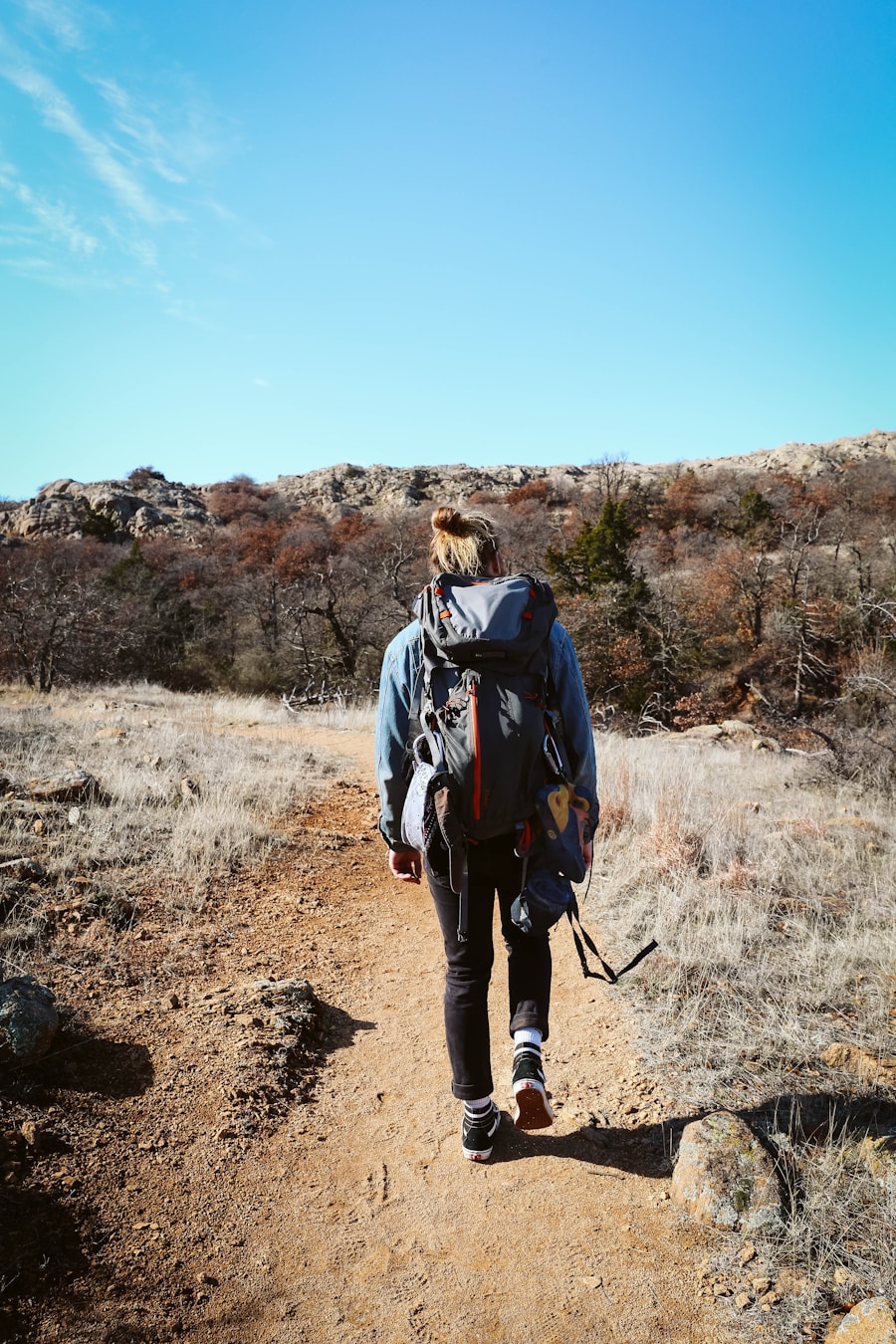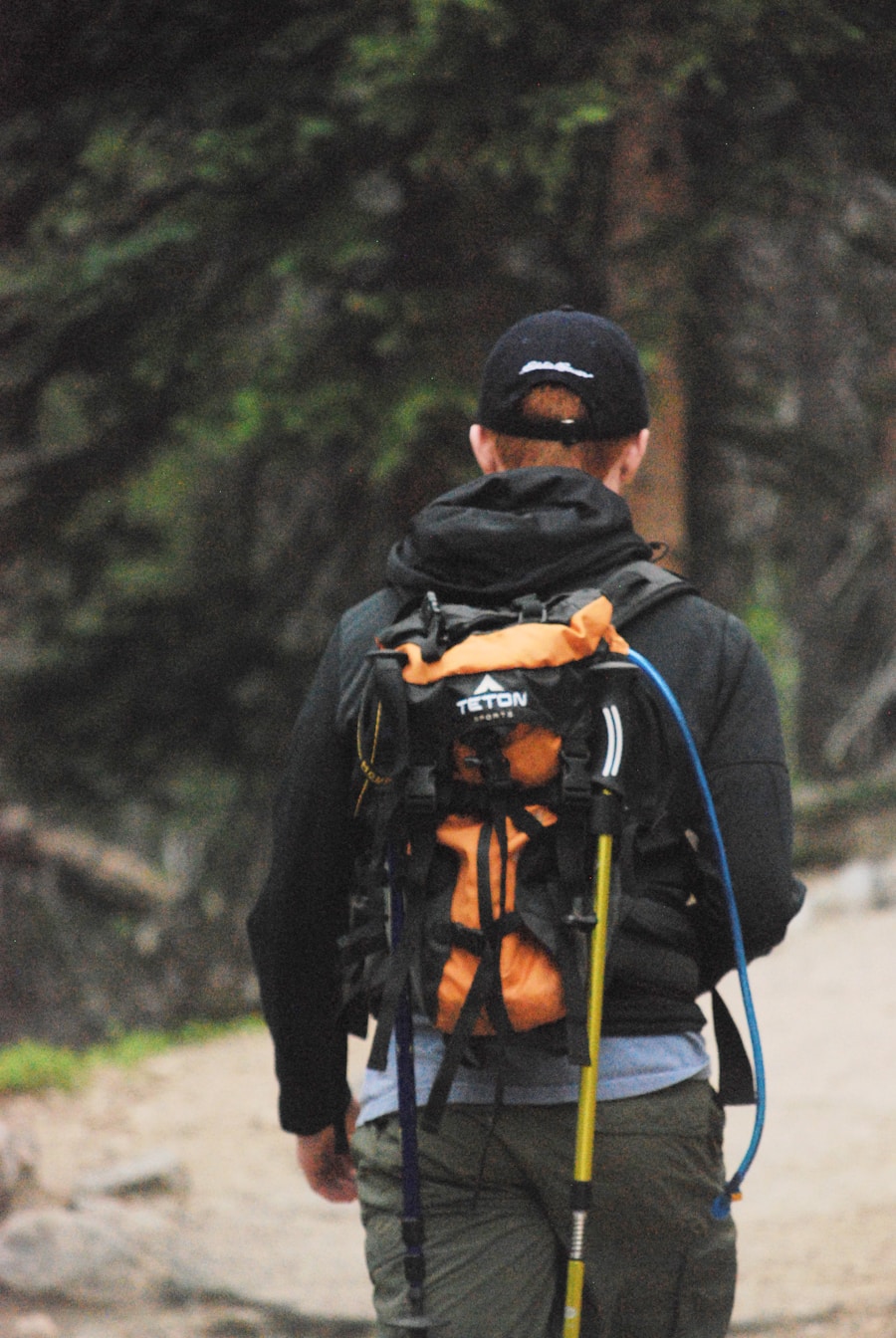Hiking is an increasingly popular activity that offers a multitude of benefits, particularly for those looking to shed excess weight. One of the most significant advantages of hiking is its ability to provide a full-body workout while allowing individuals to connect with nature. Unlike traditional gym workouts, hiking can be more enjoyable and less monotonous, making it easier for people to stick with their fitness routines.
The diverse terrains and scenic views can motivate individuals to hike longer distances, which can lead to greater calorie expenditure and weight loss. Moreover, hiking is a low-impact exercise that is accessible to a wide range of fitness levels. Whether you are a seasoned athlete or a beginner, there are trails suited for everyone.
This inclusivity means that more people can participate in hiking as a form of exercise, making it an excellent option for those who may find high-impact workouts challenging. Additionally, hiking can be done solo or in groups, providing social interaction that can enhance motivation and accountability, further supporting weight loss efforts.
Key Takeaways
- Hiking can aid in weight loss by burning calories, building muscle, and providing psychological benefits.
- Hiking burns a significant amount of calories, especially when tackling challenging terrain or inclines.
- Hiking helps build muscle in the lower body, including the legs, glutes, and core.
- Hiking can reduce stress, improve mood, and increase motivation, all of which can support weight loss efforts.
- To maximize weight loss while hiking, focus on maintaining a brisk pace, incorporating interval training, and choosing more challenging trails.
How Hiking Burns Calories
The number of calories burned during a hike can vary significantly based on several factors, including the hiker’s weight, the intensity of the hike, and the terrain. On average, a person weighing around 155 pounds can burn approximately 430 calories per hour on a moderate hike. However, this number can increase dramatically when hiking on steep inclines or rugged terrain.
For instance, hiking uphill can elevate the heart rate and increase energy expenditure, leading to a higher calorie burn compared to walking on flat surfaces. In addition to the physical exertion involved in hiking, the body continues to burn calories even after the hike has concluded. This phenomenon, known as excess post-exercise oxygen consumption (EPOC), occurs as the body works to restore itself to its pre-exercise state.
The more intense the hike, the longer the body remains in this elevated metabolic state. Therefore, incorporating challenging hikes into a regular fitness routine can lead to sustained calorie burning long after the activity has ended.
Hiking and Building Muscle

While many people associate hiking primarily with cardiovascular benefits, it also plays a crucial role in building muscle strength. The varied terrain encountered on hiking trails engages multiple muscle groups, including the legs, core, and even upper body when using trekking poles. As hikers navigate inclines and declines, they activate their quadriceps, hamstrings, calves, and glutes, which can lead to increased muscle tone and strength over time.
Furthermore, hiking can enhance overall functional fitness by improving balance and coordination. The need to navigate uneven surfaces requires the body to stabilize itself continuously, engaging core muscles and promoting better posture. This functional strength gained from hiking can translate into improved performance in other physical activities and daily tasks.
As muscle mass increases, so does the resting metabolic rate, which means that individuals may burn more calories even when at rest.
The Psychological Benefits of Hiking for Weight Loss
| Psychological Benefits of Hiking for Weight Loss | Metrics |
|---|---|
| Reduced Stress | Studies have shown that spending time in nature, such as hiking, can reduce stress levels and improve overall mood. |
| Improved Mental Health | Hiking has been linked to reduced symptoms of anxiety and depression, leading to improved mental well-being. |
| Enhanced Self-Esteem | Regular hiking can boost self-esteem and confidence, especially when combined with weight loss and improved physical fitness. |
| Increased Happiness | Being in nature and engaging in physical activity like hiking can lead to increased feelings of happiness and satisfaction. |
| Stress Reduction | Hiking has been shown to lower cortisol levels, the hormone associated with stress, leading to reduced stress and anxiety. |
The psychological benefits of hiking extend far beyond mere weight loss; they encompass improvements in mental health and overall well-being. Engaging with nature has been shown to reduce stress levels significantly. The sights and sounds of the outdoors can have a calming effect on the mind, helping to alleviate anxiety and depression.
This mental clarity can lead to better decision-making regarding food choices and lifestyle habits, which are crucial for successful weight loss. Additionally, hiking provides an opportunity for mindfulness and reflection. Being immersed in nature allows individuals to disconnect from daily distractions and focus on their thoughts and feelings.
This practice of mindfulness can foster a healthier relationship with food and body image. When individuals feel more connected to their surroundings and themselves, they may be less likely to engage in emotional eating or unhealthy habits that hinder weight loss progress.
Tips for Maximizing Weight Loss While Hiking
To maximize weight loss while hiking, it is essential to incorporate certain strategies into your routine. First and foremost, aim for consistency by setting a regular hiking schedule. Whether it’s once a week or several times a week, having a set plan can help establish a habit that promotes weight loss over time.
Additionally, consider varying your hiking routes to include different terrains and elevations. This variation not only keeps the experience fresh but also challenges your body in new ways, leading to increased calorie burn. Another effective strategy is to incorporate interval training into your hikes.
This involves alternating between periods of high intensity—such as sprinting up hills or quickening your pace—and periods of lower intensity for recovery. Interval training has been shown to enhance cardiovascular fitness and increase calorie expenditure during and after exercise. Furthermore, consider adding weight to your hike by using a weighted backpack or wearing ankle weights.
This added resistance can further boost calorie burn while also building muscle strength.
How to Incorporate Hiking into a Weight Loss Plan

Incorporating hiking into a weight loss plan requires thoughtful planning and goal setting. Start by assessing your current fitness level and identifying local trails that match your abilities. Gradually increase the difficulty of your hikes as your fitness improves; this progressive overload will help you continue to challenge your body and promote weight loss.
Setting specific goals—such as hiking a certain number of miles each week or completing a challenging trail—can provide motivation and a sense of accomplishment.
Additionally, consider pairing hiking with other forms of exercise for a well-rounded fitness regimen. For example, complementing your hikes with strength training or yoga can enhance overall fitness and support weight loss efforts.It’s also beneficial to track your progress through apps or journals that monitor your hikes, calorie burn, and any changes in weight or body composition. This data can provide valuable insights into what works best for you and help you stay accountable.
Precautions and Considerations for Hiking for Weight Loss
While hiking is generally safe and beneficial for most individuals, there are precautions that should be taken to ensure a positive experience. First and foremost, it’s essential to choose appropriate footwear that provides adequate support and traction. Hiking boots or shoes designed specifically for outdoor activities can prevent injuries such as blisters or sprains.
Additionally, always check weather conditions before heading out; being caught in adverse weather can lead to dangerous situations. Hydration is another critical consideration when hiking for weight loss. Dehydration can impair performance and hinder weight loss efforts.
Carrying enough water is vital, especially on longer hikes or in hot weather conditions. It’s also wise to pack nutritious snacks that provide energy without excessive calories; options like nuts, fruits, or energy bars can help maintain energy levels without derailing your weight loss goals.
Combining Hiking with Other Weight Loss Strategies
To achieve optimal weight loss results, combining hiking with other strategies can be highly effective. Nutrition plays a pivotal role in any weight loss journey; therefore, focusing on a balanced diet rich in whole foods—such as fruits, vegetables, lean proteins, and whole grains—can complement the physical activity gained from hiking. Meal planning and preparation can help ensure that healthy options are readily available, reducing the temptation to indulge in unhealthy foods.
In addition to dietary changes, incorporating strength training into your routine can enhance the benefits of hiking. Building muscle through resistance exercises not only improves overall strength but also increases resting metabolic rate, which aids in weight loss. Furthermore, consider engaging in group hikes or joining local hiking clubs; this social aspect can provide motivation and support while also making the experience more enjoyable.
By integrating these various strategies—hiking regularly while maintaining a balanced diet and incorporating strength training—individuals can create a comprehensive approach to weight loss that is sustainable and effective over time.
Hiking is a fantastic way to stay active and shed some extra pounds. According to a recent study, regular hiking can help individuals lose weight and improve overall fitness levels. If you’re looking to start hiking for weight loss, be sure to check out this article on how to choose the best travel guidebook for your next trip for some helpful tips on planning your hiking adventures.
FAQs
What is hiking?
Hiking is a form of outdoor physical activity that involves walking on trails or paths in natural environments such as forests, mountains, and parks.
How can hiking help with weight loss?
Hiking can help with weight loss by burning calories and increasing physical activity. It is a form of cardiovascular exercise that can help to improve overall fitness and contribute to a calorie deficit, which is necessary for weight loss.
How many calories can you burn while hiking?
The number of calories burned while hiking depends on various factors such as the intensity of the hike, the terrain, and the individual’s weight. On average, a person can burn between 400-700 calories per hour while hiking.
What are the benefits of hiking for weight loss?
Hiking offers several benefits for weight loss, including increased calorie burn, improved cardiovascular fitness, strengthened muscles, and reduced stress levels. It also provides an opportunity to connect with nature and enjoy the outdoors.
Is hiking suitable for all fitness levels?
Hiking can be adapted to different fitness levels, as there are trails available for beginners, intermediate, and advanced hikers. It is important to choose a trail that matches your fitness level and gradually increase the intensity as your fitness improves.
How often should you hike to see weight loss results?
The frequency of hiking for weight loss results can vary depending on individual goals and fitness levels. It is recommended to engage in moderate-intensity hiking for at least 150 minutes per week, or more for greater weight loss benefits.
Are there any precautions to take while hiking for weight loss?
It is important to stay hydrated, wear appropriate footwear and clothing, and be mindful of the terrain and weather conditions while hiking for weight loss. It is also advisable to start with shorter hikes and gradually increase the duration and intensity to avoid overexertion.
